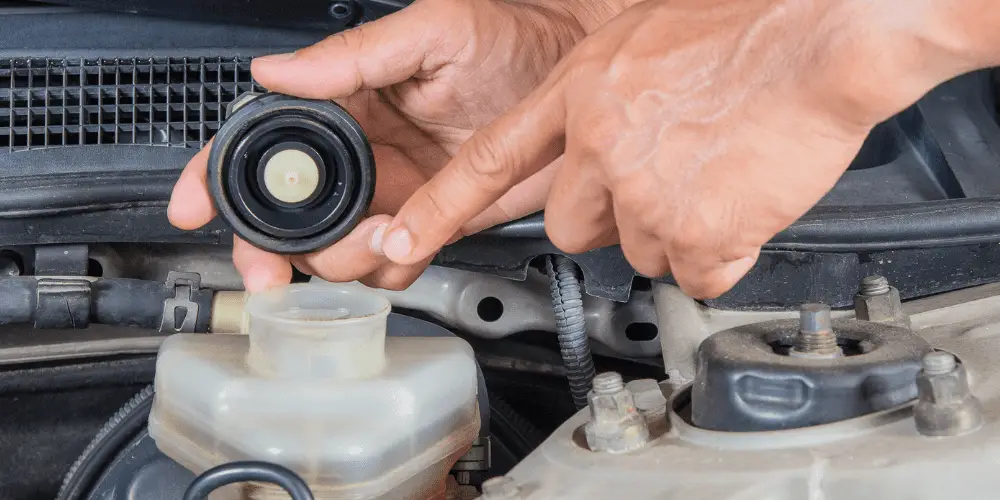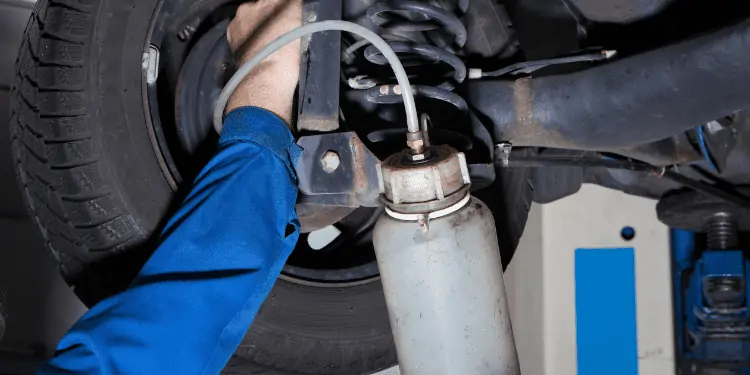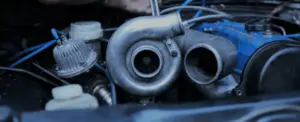One of the most common problems drivers face with braking systems is the sudden brake pedal stiffness or a soft spongy feel when trying to brake.
Many potential causes need to be considered; the most important of these are the ones we’ll discuss further here. We’ll also try to go through some brief explanations of these causes and their solutions.
When you apply the brakes and feel a spongy sensation (the pedals may be softer to press or not as firm), that’s a sign that the internal braking system is at fault and not other parts around the wheels, such as the brake pads or rotors, for example.
Here are the causes of a brake pedal being intermittently soft and hard.
Air in the Brake Fluid
A mechanic will tell you that soft brakes almost always mean that air has entered the internal braking system. If this is the problem, pressing the brakes gently multiple times should make the pedal feel stiffer with each press.
To understand why this happens, a more detailed look at brake fluid will be useful:
The chemical nature of brake fluid causes a situation where the fluid absorbs moisture more readily. In doing so, its operating point decreases. This causes vapor pockets to form in the fluid and pipes, which becomes the source of the issue.

Where the air is in the circuit dictates whether the pedal is hard or soft. As you press the pedal, the hydraulic brake fluid is compressed and moves around the circuit. This movement can make the brakes feel soft one moment and then hard when you next press on the brake pedal.
Any one or multiple braking system parts, including the master cylinder, ABS modulator, and calipers, can have air trapped in them.
The most effective solution is to bleed the brakes. This is quite a simple process: the fluid and air bubbles must be drained from the system by allowing the fluid to be flushed out. New brake fluid is then added to the fluid reservoir.
It is a relatively simple to intermediate-level DIY process, though many car drivers would rather take their car to the shop to get this job done.
It deserves to be mentioned here that low brake fluid will cause the same problem due to the inadequate pressure it develops in the system. Check whether the required fluid has been added before and after you bleed the brakes.
Cost: It can cost anywhere from $50 – $200, depending on the specific fluid and mechanic service you visit.
Fluid Leaking From The Brake Lines
The brake fluid we add to a brake system is responsible for carrying and maintaining the pressure developed in the system. Over time, the pipes in the system which carry this fluid may become rusty, or their insides might corrode.
Small holes might appear in the pipes’ walls and cause the fluid to leak out, decreasing the overall pressure in the system and thereby making the brakes softer and spongier.
A worse scenario is when the master cylinder starts to leak. Its internal cup seals can cause the same phenomenon with the pedal, and so can the secondary (pushrod) seals. Besides air bubbles accumulated in the system, contaminated fluid could cause similar problems by corroding parts and causing rubber parts to swell, thus causing brakes to feel hard and soft.
Cost to repair leaking brake fluid: It will vary based on the type of leak the system is experiencing. Typically, you can expect something in the range of $150 – $300, which includes parts and labor. The damage and accessibility of the damaged parts determine how much a repair will cost.
The master cylinder is tied quite closely to other braking parts and is the main component in the brake system. In case it gets damaged, repair costs can go up. To the extent the damage increases, the entire cylinder might have to be replaced.

Other components which tend to be the culprit are leaking disc brake calipers and the brake booster. Bad calipers can cause the internal piston seal to leak fluid when damaged by rust or corrosion, while the brake booster can cause the entire system to malfunction.
How To Fix Tips Sudden Soft Brakes
You’ll be lucky if the brake feels soft or spongy while the car is stationary, but brakes can go soft and hard when driving.
Here are some tips you can follow to diagnose the issue immediately and potentially solve it until you reach a mechanic for a thorough inspection and repair.
Try and Pump the Pedal
The reasons we’ve discussed so far all translate into the brake components’ inability to produce the required braking pressure. As we’ve already seen, several faulty components could be responsible.
Pumping the brakes generates pressure in the system – even though there may be a leak or a component may be compromised, repeatedly pushing the pedal will generate enough pressure to bring the car to a halt until further measures can be taken.
Look for a Leak
Fluid leaks may be visible if you have a sharp eye. If your brakes have failed suddenly, it’s likely the cause was a bad leak or faulty seal somewhere in the system. If the leak does occur, it will most likely be at the junctions between the different components it flows through.
Thankfully, many of these are external components and lie outside the engine under the hood.
Inspect the area near your wheels for signs of a leak. Brake fluid is usually clear or yellow and should be easily visible. Fixing the leak is the priority in such a situation.
The other option here is to inspect the internal components (such as the master cylinder etc.) for signs of a leak. The fluid reservoir will show you the amount of fluid lost in case you missed any signs of a leak on the outside.
No level of low brake fluid is acceptable, and the level should be kept topped up to ensure full braking power.
Bleed Your Brakes
Although we’ve discussed leaks in detail, overheating and wear can also cause air bubbles in the fluid. If you have brake fluid available near your home or another suitable space, you can attempt to drain the contaminated fluid and replace it to solve the problem.
Some familiarity and comfort with handling brake components will be required, but the procedure is DIY-friendly enough that many people choose to do it themselves.
Remember to pump your brakes after draining the old fluid so it completely exits the pipes, and the newly added one makes its way through.
A problem with the brake pedals going hard and then soft can often feel frightening since it makes you lose your sense of control over the vehicle. In most cases, the cause is one of the few mentioned above. If you ever experience spongy or loose pedals, the best way is to first try and stop your car by pumping the brakes.
Once that’s done, you can proceed to inspect the components for any visible signs of damage or a leak. When you have that identified, you can either repair it yourself or visit a trusted mechanic to have a look. Like most cases, it’s best to remain calm and follow a step-by-step approach to identify and eliminate the problem.
Many visitors read this article next:
Squeaking Noise While Driving But Brakes Not Applied
Car Won’t Start And Brake Pedal Is Hard and Stiff [SOLVED]
In conclusion
This might be caused by several issues, including a brake line leak, a failing seal in the master cylinder, or air released into the braking system. You should immediately pump the brake pedal with your foot when you encounter spongy brakes.













